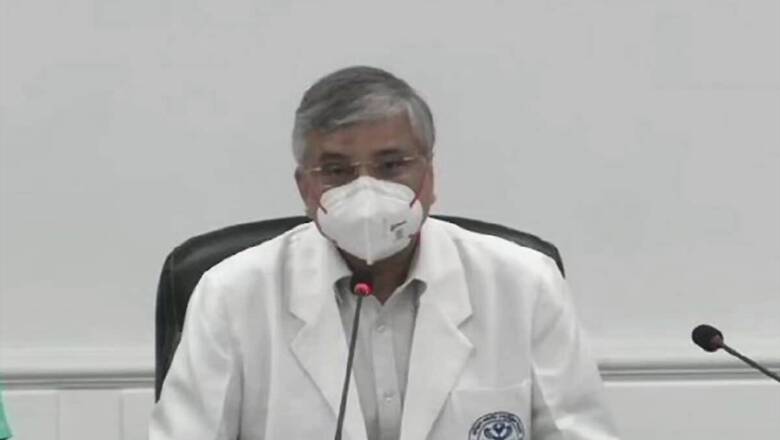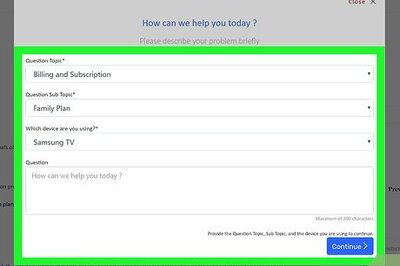Covid-19 Curve Flattening in Delhi, Mumbai & Ahmedabad, But Can't Let Our Guard Down: AIIMS Director

views
AIIMS Director and member of the National Task Force on Covid-19, Dr Randeep Guleria is spearheading the battle against the coronavirus pandemic in India. In an exclusive interview with News18’s Sneha Mordani, the leading pulmonologist shares what his experience has been dealing with Covid-19 patients and insightful perspectives on the way ahead for the country.
Dr Guleria also discusses a range of issues, including, the flattening of the curve, India's low mortality rate, and the effect of monsoons on the spread of Covid-19.
Edited Excerpts:
Q: City-wise lockdowns have been announced in many places now. Will this help control the number of cases?
A: Question here is if there is an area where there are large of cases, we have to have aggressive containment strategies. It could include not only a lockdown but house to house surveillance so that you can decrease the number of cases and contain the spread in that area. But identifying cases and isolating them along with a lockdown becomes very important.
Q: Epidemiologically, reaching a peak would mean that we begin to see a decline in cases. Do you believe that some states, like Delhi, have reached their peak? What about the national peak? How would you define a peak?
A: Different parts of the country will peak at different times. Delhi is one such state where flattening of the curve is happening. It is happening in other areas of the country as well. Mumbai, Ahmedabad and certain parts of the South are showing a decline. They seem to have reached a plateau and are showing a downward trend. However, there are other areas where cases are increasing. We have seen this in Bihar, Assam and we need to have aggressive strategies there. But when cases do come down, we need to continue to be aggressive. This happened in parts of India, and when cases came down, everyone thought they are immune and can stop social distancing and wearing of masks and that led to another spell of the virus.
Q: How much can one rely on antibody testing?
A: It will just tell us how many individuals have mild or asymptomatic infection. In Delhi, for example, a large number of people got infected without knowing. Without getting tested, without getting any treatment, they recovered from the infection. That would suggest our mortality is further lower than what we are calculating. That is the good news. The bad news is that there are people who have the infection and don’t know and are spreading it in the community. The Delhi sero survey showed that 77 per cent of the people are prone to infection and therefore we still need to be vigilant.
Q: For how long is a person with antibodies going to enjoy immunity?
A: This is an important question even from the vaccine point of view. Current data suggests, the person gets about three months of immunity though the immunity also tends to vary from individual to individual. Also, we need follow-ups as far as this data is concerned. Some individuals show that immunity tends to wane after three months. We are still trying to understand the immunology of the virus. We are looking at various factors for immunity. It can be a T cell-based immunity. It is possible that we are having more immunity. The aero surveillance in these cities wasn’t very high.
Q: How is that Indians are enjoying so much immunity? For example in Ahmedabad, the sero-prevalence is as high as 50%? In western countries, the percentages of sero-prevalence are in single digits.
A: In India, there is a lot of population density. Large clusters are there, so maybe a lot of exposure is happening even repeatedly. And this is a population that is staying in one room, sharing the same toilets and that is developing a robust immunity. The mortality in India continues to be low. This shows we have a better immune system. Maybe this is because of a BCG Vaccine. The other theory is that possibly that milder forms of coronavirus, that has flu-like syndrome, has been circulating here in Asia and many people have had some exposure to the milder form of coronavirus and this leads to cross-protective immunity. And this gives us an immunity boost
Q: What impact will the monsoon and humidity have on Covid-19? Will the infection become more virulent around monsoon time? What about winters?
A: This is a big cause of concern. Influenza flu network of India shows that this spikes in monsoon and winter. However, this is a new virus and we don’t know how it will behave. In the human environment, the virus can survive for a longer period of time. There is a concern that during monsoons there is humidity, the virus could be surviving for a longer period than hot summers. There is a concern in the west that there be a second spell in winter months but coronavirus is a different virus so I can’t say anything definitively. The 1980 pandemic of influenza led to a second wave in the winter months and caused more mortalities then. We need to be cautious during winter months and not let our guard down.
Q: Should we bring in more symptoms in the ambit of what to look out for?
A: We are looking at this very very closely. Initially, we thought this was viral pneumonia and was causing upper respiratory distress. In some people, it goes from throat to lungs and that is causing severe pneumonia. Over the months, we realised this and it led to a change in our treatment strategy. Also, this is a systemic disease. It causes ACE2 receptors and these receptors are present in various organs including blood vessels and the virus causes inflammation of blood vessels and this leads to clotting in the brain. We had young people with strokes and they turned out to be Covid-19 patients. We had patients with heart attack who turned out to be Covid-19 patients. I had a patient who came to me with diarrhoea, no respiratory symptoms and he thought because of the lockdown the drinking water that he was consuming was not fresh which was leading to diarrhoea. He has no respiratory symptoms. He has ongoing diarrhoea for five to seven days. We are seeing Covid-19 patients with conjunctivitis, eye involvement. These are extra-pulmonary manifestation and we have to have a high index of suspicion and low threshold for testing as we go along.
Q: And what is the post-Covid syndrome in children like? Kawasaki disease is being seen in children.
A: Yes, this is a separate syndrome but it is like Kawasaki. Multi-system Inflammatory Syndrome in Children. They have a hyper immune response which affects multiple organs in the body. This happens even after 3-4 weeks after the disease. Multi-system inflammation is what is seen in children even after recovery. The virus is not there but this syndrome is seen. It can cause neurological problems, it can cause cardiac problems.
Q: What more precautions need to be taken vis-a-vis centralised air conditioning, etc. since it is understood now that the infection is airborne as well? How effective are HEPA filters?
A: There is some evidence which is coming but we need to see how strong is this evidence. Particle size is what differentiates on whether this is a droplet infection or respiratory infection. That is why we say avoid close contacts and avoid touching surfaces. Some particles are less than five microns and can travel for six metres. They can stay suspended in the air in an indoor environment.
There is aerosol transmission definitely and in an indoor environment, you must protect yourself and have cross ventilation. Open windows allow aerosols to go out. If you have to use an AC ensure it has good air exchangers which means fresh air must come into the room and the air in the room goes out. If you have HEPA filters use them or install them. You can also get UV light, germicidal light in the AC ducts, so that when the air is exchanged the UV light will kill the germs. The simplest thing is to have an exhaust and ensure there is good air exchange.
Q: Realistically, how soon can we expect a vaccine? Historically, what was the soonest the world got a vaccine for any disease/infection?
A: Normally, a vaccine takes 10 years to develop because everything is done in a sequential manner. There are 100 candidates for a vaccine now. About 20 of them are shortlisted and being tried. Six of them are in the human trials stage. The first thing is you try on humans and then see how effective this is. We need a vaccine that gives us good protection, efficacy of 70 to 80 per cent and where the efficacy lasts for months if not years. Once we find a vaccine we give it to the vulnerable, people with comorbidities and senior citizens to see we can protect them from getting this infection. That is the actual test to see if the vaccine is working. Challenge will be mass production and we have to prioritise who gets it first and who gets it later.


















Comments
0 comment